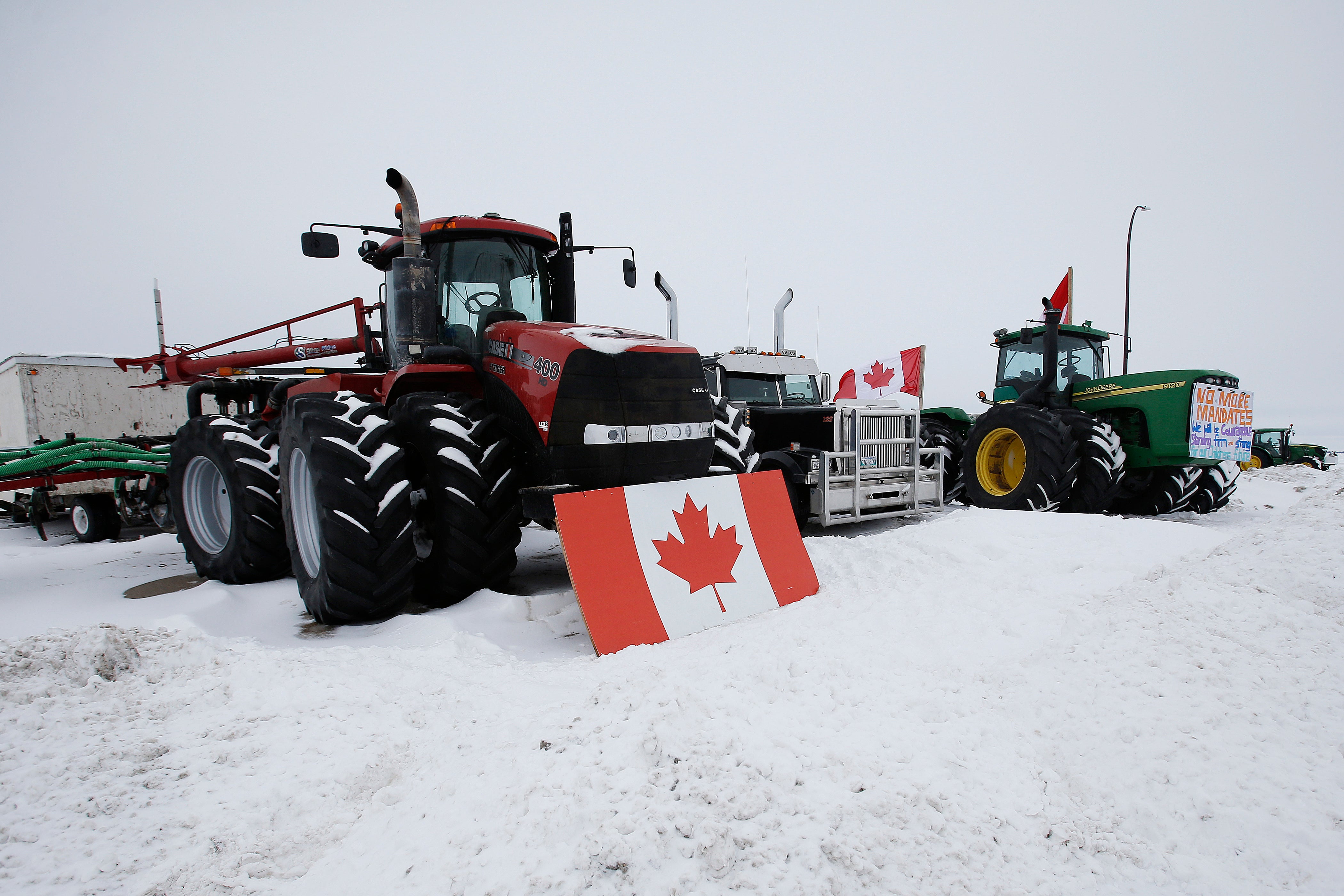Canadian authorities look to the courts to break blockade
Authorities in Canada are headed for court in an attempt to break the bridge blockade by truckers protesting the country’s COVID-19 restrictions

Authorities in Canada headed for court Friday in an attempt to break the bridge blockade by truckers protesting the country’s COVID-19 restrictions as parts shortages rippled through the auto industry on both sides of the U.S.-Canadian border.
The mayor of Windsor Ontario planned to seek an injunction at an afternoon hearing against members of the self-proclaimed Freedom Convoy who have used scores of pickup trucks to bottle up the Ambassador Bridge connecting the city to Detroit. The standoff entered its fifth day Friday.
Federal, provincial and local authorities have hesitated to forcibly remove the protesters there and elsewhere around the country, reflecting apparently a lack of manpower by local police, Canada's reverence for free speech, and fear of a violent backlash. Windsor Mayor Drew Dilkens warned earlier this week that some of the truckers are “willing to die.”
But the pressure to reopen the bridge appeared to be mounting, with Ford, General Motors, Toyota and Honda closing auto plants or canceling shifts because of parts shortages, and the Biden administration urging Prime Minister Justin Trudeau’s government to use its federal powers to end the blockade. Michigan's governor likewise called on Canadian authorities to quickly resolve the standoff.
The Ambassador Bridge is the busiest U.S.-Canadian border crossing, carrying 25% of all trade between the two countries. The standoff comes at a time when the auto industry is already struggling to maintain production in the face of pandemic-induced shortages of computer chips and other supply-chain disruptions.
“American legislators are freaking out, and rightfully so,” said Nelson Wiseman, a political science professor at the University of Toronto “Pressure is now being exerted by the White House on Trudeau to act more decisively.”
Hundreds of demonstrators in trucks have also paralyzed the streets of downtown Ottawa for almost two weeks now, and have now closed three border crossings in all: at Windsor; at Coutts, Alberta, opposite Montana; and at Emerson, Manitoba, across from North Dakota.
The Freedom Convoy has been promoted and cheered on by many Fox News personalities and attracted support from the likes of former President Donald Trump.
“This is an unprecedented demonstration. It has significant levels of fundraising, coordination and communication. They have command centers established here and across the country and beyond this country,” embattled Ottawa Police Chief Peter Sloly said.
On Friday, amid signs that authorities might be prepared to get tough, police in Windsor and Ottawa awaited reinforcements from the Royal Canadian Mounted Police.
The protests have spread outside Canada as well. Demonstrators angry over pandemic restrictions drove toward Paris in scattered convoys of camper vans, cars and trucks Friday in an effort to blockade the French capital, despite a police ban.
And in a bulletin to local and state law enforcement officers, the U.S. Department of Homeland Security warned that truck protests may be in the works in the United States. The agency said the protests could begin in Southern California as early as this weekend and spread to Washington around the State of the Union address in March.
Wiseman said the Canadian army should have been called in after a week of the Ottawa standoff.
“Hesitancy by federal authorities to act decisively has emboldened the occupiers and copycat occupations," he said. “Ottawa, I believe, will be compelled to use the army."
The Canadian protesters are decrying vaccine mandates for truckers and other COVID-19 restrictions and are railing against Trudeau, though many of the country’s infection measures are already rapidly being lifted as the omicron surge levels off.
Trudeau continues to stand firm against lifting vaccine mandates. The prime minister has called protesters a “fringe” who believe in conspiracy theories and wear “tinfoil hats.” It has only incensed them further.
Pandemic restrictions have been far stricter in Canada than in the U.S., but Canadians have largely supported them. The vast majority of Canadians are vaccinated, and the COVID-19 death rate is one-third that of the United States. Canada lacks hospital capacity, so provinces have been quick to impose lockdowns when waves have hit.
Conservative Ontario Premier Doug Ford moved to cut off funding for the protests by successfully asking a court to freeze millions of dollars in donations to the convoy through crowd-funding site GiveSendGo. Ford has called the protests an occupation and was expected to announce further measures later Friday.
Canadian officials previously got GoFundMe to cut off funding after protest organizers used the site to raise about 10 million Canadian dollars ($7.8 million.) GoFundMe determined that the fundraising effort violated the site’s terms of service because of unlawful activity.
Bookmark popover
Removed from bookmarks